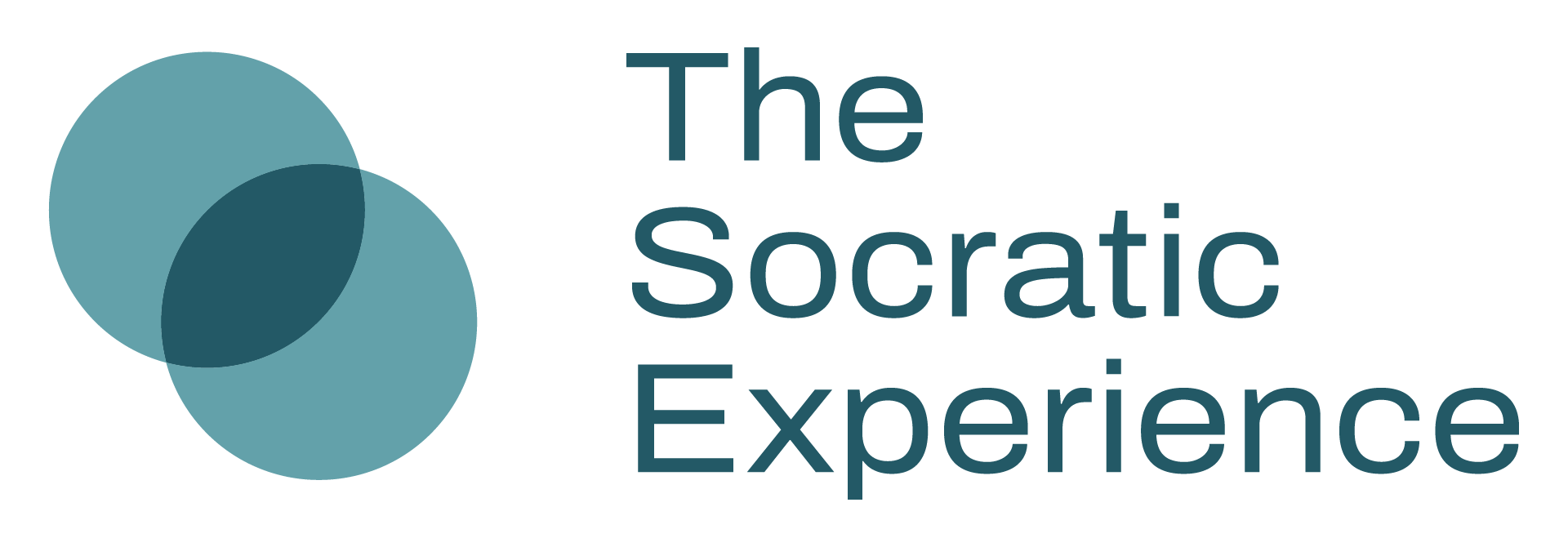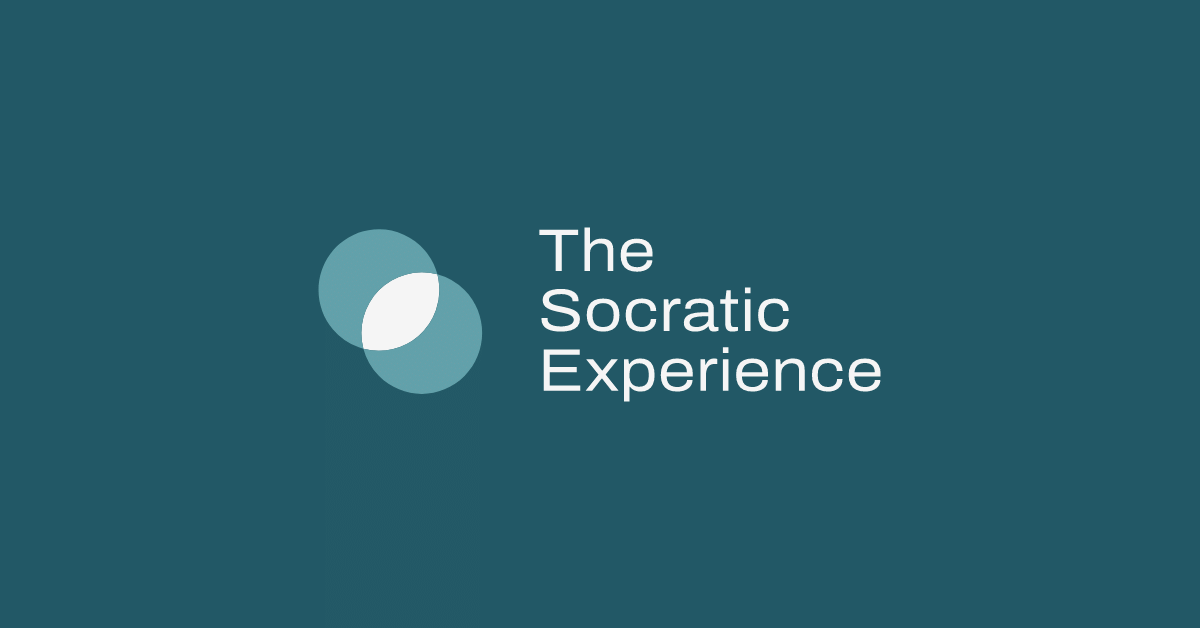Michael Strong, The Socratic Experience
Thanks largely to the efforts of Jean Twenge and Jonathan Haidt, we have finally reached the point at which the public is aware of the adolescent mental health crisis taking shape.(1) Their approach has been to highlight the role of social media as a causal factor in the epidemic of depression among adolescent girls
Their proposed policy response is to regulate social media so that teens cannot access it so easily. Utah has responded promptly, passing legislation requiring minors to obtain consent from their parents to access social media and forcing social media companies to obtain age verification from all Utah users.(2) The big question remains: Can it be enforced effectively?
While parents, governments, corporations, and the broader public engage in what is likely to be a long cat and mouse game regarding access to social media, I want to call attention to a fundamentally different strategy for addressing the adolescent mental health crisis: Learning environments rich in connection, community, meaning, and purpose.
CDC reported in April 2022, based on a survey of 7,705 adolescents:
“Compared with those who did not feel close to persons at school, students who felt close to persons at school had a significantly lower prevalence of poor mental health . . . during the past 30 days (23.5% versus 37.8%), persistent feelings of sadness or hopelessness (35.4% versus 52.9%), having seriously considered attempting suicide (14.0% versus 25.6%), and having attempted suicide (5.8% versus 11.9%).” (3)
While Twenge and Haidt have been nobly focused on the role of social media in the adolescent mental health crisis, a very simple approach to reduce the harm is right before our eyes: Increase the extent to which adolescents feel connected at school. Note that not feeling connected at school more than doubles the rate of attempted suicide.
Moreover, the need for adolescents to feel connected is hardly new. This is a sampling of an immense literature on the issue:
“Longitudinal evidence of the positive effects of school connectedness has been documented in both middle and high school. In one study, middle school students who reported low school connectedness showed increases in conduct problems, such as delinquent behavior, one year later (Loukas, Ripperger Suhler, & Horton, 2009). Another study showed that low school connectedness in late middle school was associated with greater anxiety/depressive symptoms and marijuana use in high school and one year post high school, and middle school students with low social connectedness were less likely to complete high school (Bond et al., 2007). Research from the National Longitudinal Study of Adolescent Health, a nationally representative study that follows nearly 60,000 students (grades 8 through 12), found that a sense of belonging to school predicts lower depression and social rejection, fewer school problems, greater optimism, and higher grades one year later (Anderman, 2002). (4)
The need for human connection is so obvious that it seems odd even to cite data showing that it is a need. But that is where we are.
No Child Left Behind (NCLB), passed in 2001, was the capstone of an accountability movement in public education that had been building momentum since the 1980s. Although Obama replaced it in 2015 with the Every Child Succeeds Act (ESSA), which is more flexible at the state level but which is still premised on academic testing as the primary form of accountability.
Both NCLB and ESSA may be seen as examples of “Seeing Like a State,” in the felicitious expression of James Scott, the idea that government can plan a positive outcome. One of his examples is Brasilia,
“The term brasilite, meaning roughly Brasilia-itis,which was coined by the first-generation residents, nicely captures the trauma they experienced. As a mock clinical condition, it connotes a rejection of the standardization and anonymity of life in Brasilia. “They use the term brasilite to refer to their feelings about a daily life without the pleasures-the distractions, conversations, flirtations, and little rituals of outdoor life in other Brazilian cities.” (5)
State planning is inherently sterile and inhumane. The state sees through a particular metric, such as test scores. If human connection is important to adolescent well-being, well so much the worse for human connection. If children die as a consequence, woops!
There is also a diverse and growing literature showing that having a sense of purpose improves well-being. One recent study notes,
“Our findings show that no matter where you are in comparison with your peers, when you feel more purposeful than usual, you have better outcomes,” (6)
Might this be relevant to those teens, male and female, who are lost in constant status games on social media? Purpose is based on having an internal locus of control rather than being at the mercy of external events.
Another broad summary of the research states,
“The current state of research on purpose during adolescence makes three things clear. First, across a broad range of adjustment domains, youth who cultivate a sense of purpose in life tend to fare better than those who do not. Second, purpose does not appear to be a particularly elusive resource, but rather one that all youth have the capacity to foster. Third, a sense of purpose may be leveraged to help youth successfully negotiate many challenges during the adolescent transition.“ (7)
Again, as with a sense of connection, developing a sense of purpose is not among the metrics chosen by the state to measure school effectiveness.
It is important to note that purpose presupposes a sense of meaning,
Purpose can also be differentiated from this concept of meaning, though the terms are often used interchangeably. Individuals may derive a sense of meaning when they are able to comprehend and make sense out of their own experiences (Heintzelman, Trent, & King, 2014). While purposeful individuals may certainly view their lives as meaningful, they are also motivated to generate goals and take actions that are congruent with this sense (McKnight and Kashdan, 2009). (8)
If activities are meaningless to a student (such as many homework assignments), they may strive to achieve the goal of completing the work and attaining a requisite grade, but they do not thereby experience a sense of purpose.
Finally, I interpret “community” as combining the essential social function of connection with some shared framework of meaning. There is a shared sense of what is excellent or admirable, on the one hand, and what is shameful or inappropriate, on the other hand. This shared moral framework is how we are inspired to become a better person within the framework. (9) It thus gives rise to a shared sense of purpose.
As a consequence, an adolescent environment that includes connection, community, meaning, and purpose in an integrated social framework is most potent against adolescent mental health challenges. Every teen (really every human being) should be immersed in such an environment all day every day — or as close as we can get. Elsewhere I’ve written on “Evolutionary Mismatch as a Causal Factor in Adolescent Dysfunction and Mental Illness.” (10) Consider a TL;DR version of this as “teens need connection, community, meaning, and purpose for mental well-being.”
Now that we’ve just sketched an outline of the importance of connection, community, meaning, and purpose, let’s return to the broader issue of the adolescent mental health crisis and the choice of school that a child attends. Those eduwonks and policy makers who are inclined to “see like a state” may be inclined to take the information and derive policies that attempt to impose these good things on schools as they exist today. But there is a much simpler, more natural, and more effective bottom up approach: Let students and parents choose schools at which the students feel a sense of connection, community, meaning, and purpose.
We are living in a golden age of educational freedom. In 2022 Arizona passed the first universal Educational Scholarship Account program, providing all 1.1 million children in Arizona with the opportunity to choose any educational program they please. West Virginia then did so as well. Similar legislation has been passed so far in 2023 in Iowa, Utah, and Arkansas with potential for additional legislation in North Carolina, South Carolina, Florida, Texas, Kansas, and Pennsylvania.
Rather than “see like a state” and propose legislation that tries to impose connection, community, meaning, and purpose, we need to let millions of families engage with millions of educators in voluntary associations. One cannot legislate connection. One cannot legislate community. One cannot legislate meaning. One cannot legislate purpose.
Adolescent suicides are almost 2x on Mondays during the school year compared to summer break. (11) It is not as if they don’t have access to social media during July. Indeed, this distinctive pattern of teen suicides was evident by 2010, before the more recent burst in adolescent mental health issues (which Haidt recently dates as trending sharply upwards around 2012). (12) Moreover, the seasonal pattern stops when teens leave high school, additional evidence that school attendance itself is a risk factor distinct from the social media induced crisis.
Moreover, what is less well recognized is that the current adolescent mental health crisis has been a long time coming. Twenge and Haidt show data on the dramatic uptick in teen suicides since 2007. Again, this is real. What they do not show is the earlier dramatic increase in teen suicides from 1940 to 1992:
“Between 1940 and 1980, the rate for white males aged 15 to 19 years more than tripled, representing a 231% increase . . . Between 1980 and 1992. . . the rate increased by 28.3% among those aged 15 to 19 years (from 8.5 to 10.9) . . . ” (13)
No one knows why there was a downturn in the long term upward trend of teen suicides from 1992 to 2007.
But it is clear that our teens have not been well for a very long time. By global and historical standards, adolescent well-being in the US was a catastrophe by the 1980s. The recent trends identified by Twenge and Haidt, are a continuation of long-standing trends. Yes, they’ve increased roughly 50% since 2007, from roughly 7 per 100,000 to 12 per 100,000 in 2017, just slightly above where they were in 1992. (14) Why did they increase from 4.5 in 1950 to 10.9 in 1992? (15)
More than a hundred years ago, Durkheim showed that suicide was higher among Protestants than Catholics. More recently sociologist Liah Greenfeld has broadened Durkheim’s analysis of anomie to serve as a general account of the rise of functional mental illness in modernity. In her account, depression, bipolar, and schizophrenia are ultimately rooted in the increased anomie of modern society. Without going into the details of her account, it is noteworthy that there continues to be broad evidence that greater anomie leads to higher rates of suicide. For instance, consider this large scale study of youth in the Dominican Republic from 2011 (N=8442):
The increase in the propensity to attempt suicide for DR youth across these US cultural involvement indicators were not only robust but large. For example, the propensity to attempt suicide ranged from 6.3% for those on the lowest range of use of US electronic media and language to 13.3% for those on the highest range of US electronic media and language. This central finding is congruent with the lower suicide or suicide attempt rates found for first-generation or less acculturated Latinos across multiple national and regional cohorts of Latinos. (16)
Prior to widespread smartphone and social media use, contact with US media led to a doubling of rate of adolescent suicide in the DR. Many African nations today have teen suicide rates lower than the US had as of 1940. (17) The crisis of anomie has not yet hit them. The anomie of modernity is deadly.
Thus while Twenge and Haidt and various legislators attempt to regulate social media, parents should seek to find or create learning environments in which their children experience connection, community, meaning and purpose. Do it now.
See Beth Hankoff’s comment: This is a critical topic. I agree with you even without the research because I’ve experienced this myself. In 7th grade, I went to a large, impersonal middle school where students were funneled in from several small towns. Most of the teachers were checked out, and it was hard to meet new friends (I had only been living in the area for a year prior). By the second semester, I refused to go to school. I wasn’t learning anything and socially I was either ignored or bullied. The following year, with my agreement, my parents enrolled me at a very small progressive school. I was quiet at first, but by my senior year I was sharing my opinions on everything (probably more than they wanted me to). Many of my current thoughts on education were formed there, including eschewing punishment and grades, and drastically reducing class size. Everything changed for me simply because I was known and part of a community where I was given reasonable autonomy. What’s so hard about that? If it can prevent teen suicides — or even depression — it is worth it.
(1) https://www.judiciary.senate.gov/imo/media/doc/Haidt%20Testimony.pdf
(2) https://abcnews.go.com/US/wireStory/utah-social-media-law-ambitious-enforceable-98110856
(3) https://www.cdc.gov/mmwr/volumes/71/su/su7103a3.htm
(4) Article
(5) https://www.amazon.com/Seeing-like-State-Certain-Condition/dp/0300078153
(6) https://www.sciencedaily.com/releases/2023/02/230213201032.htm
(7) https://www.actforyouth.net/resources/rf/rf_purpose_1014.pdf
(8) https://www.actforyouth.net/resources/rf/rf_purpose_1014.pdf
(9) Adapted from Alasdair MacIntyre’s analysis in After Virtue. For a school-based application of this framework, see https://flowidealism.medium.com/meaning-at-the-socratic-experience-1c1d9942d7bc
(10) https://flowidealism.medium.com/evolutionary-mismatch-as-a-causal-factor-in-adolescent-dysfunction-and-mental-illness-d235cc85584 For details on how my program, The Socratic Experience, cultivates meaning and purpose, see https://flowidealism.medium.com/meaning-at-the-socratic-experience-1c1d9942d7bc
(11) https://www.scientificamerican.com/article/childrens-risk-of-suicide-increases-on-school-days/
(12) https://jonathanhaidt.substack.com/p/social-media-mental-illness-epidemic
(13) Shields, Lisa & Hunsaker, Donna & hunsaker iii, John. (2004). Trends of Suicide in the United States During the 20th Century. 10.1007/978–1–59259–910–3_10.
(15) https://stacks.cdc.gov/view/cdc/12870
(16) https://europepmc.org/article/PMC/3489379
(17) https://ourworldindata.org/grapher/suicide-rates-by-age-detailed-who


